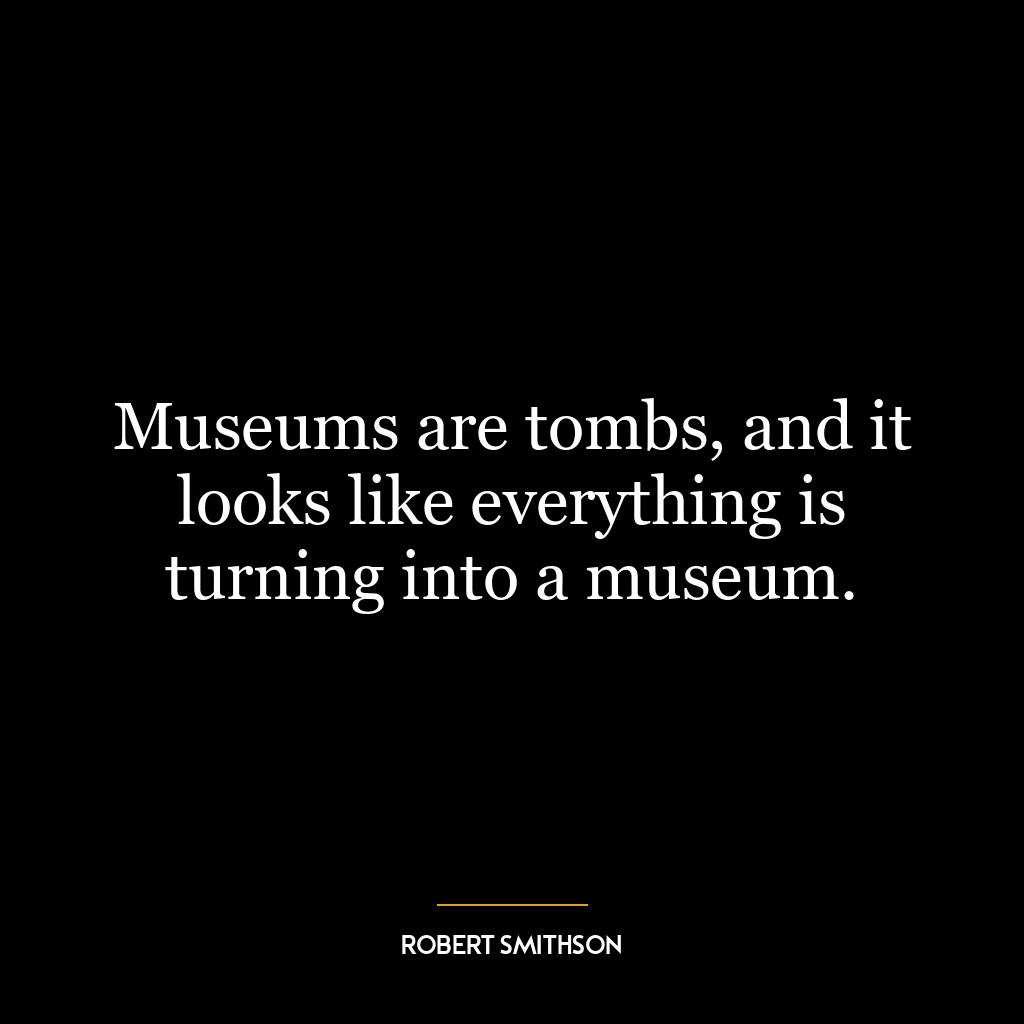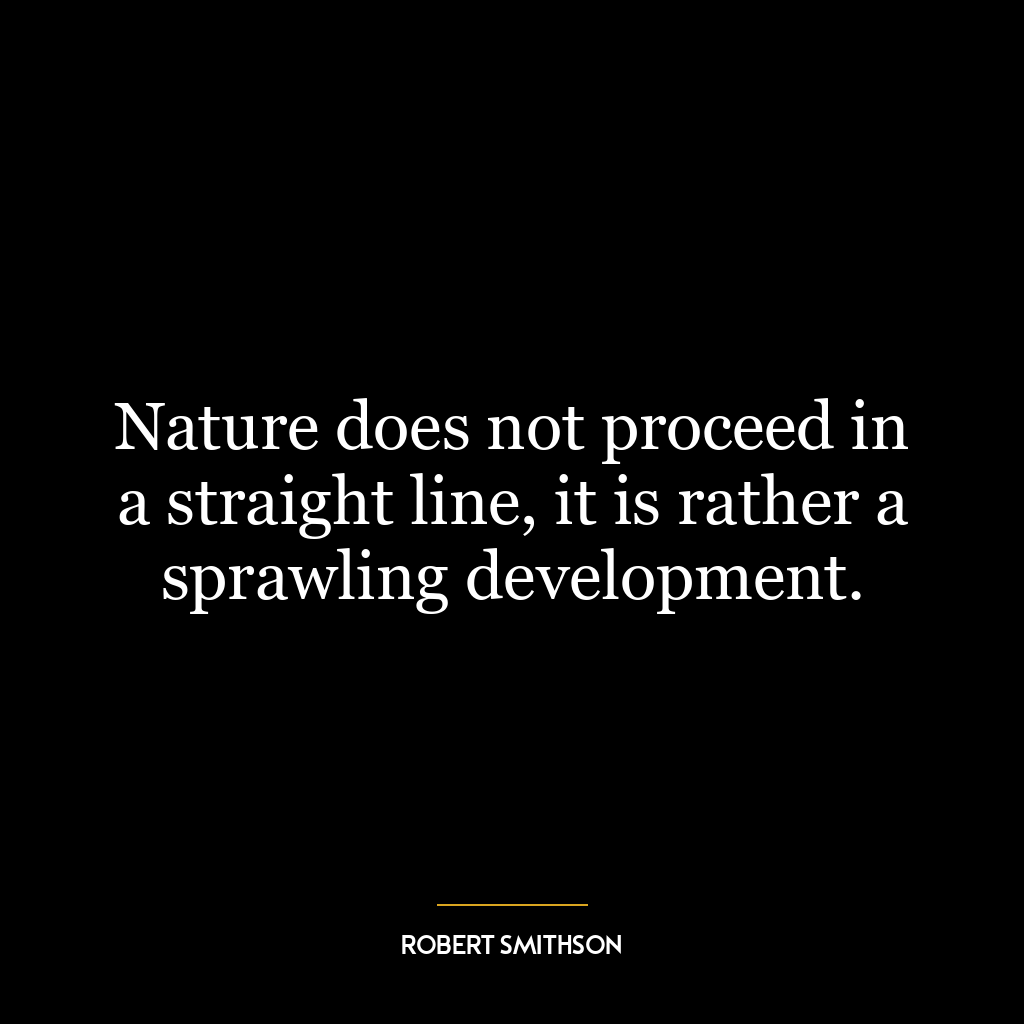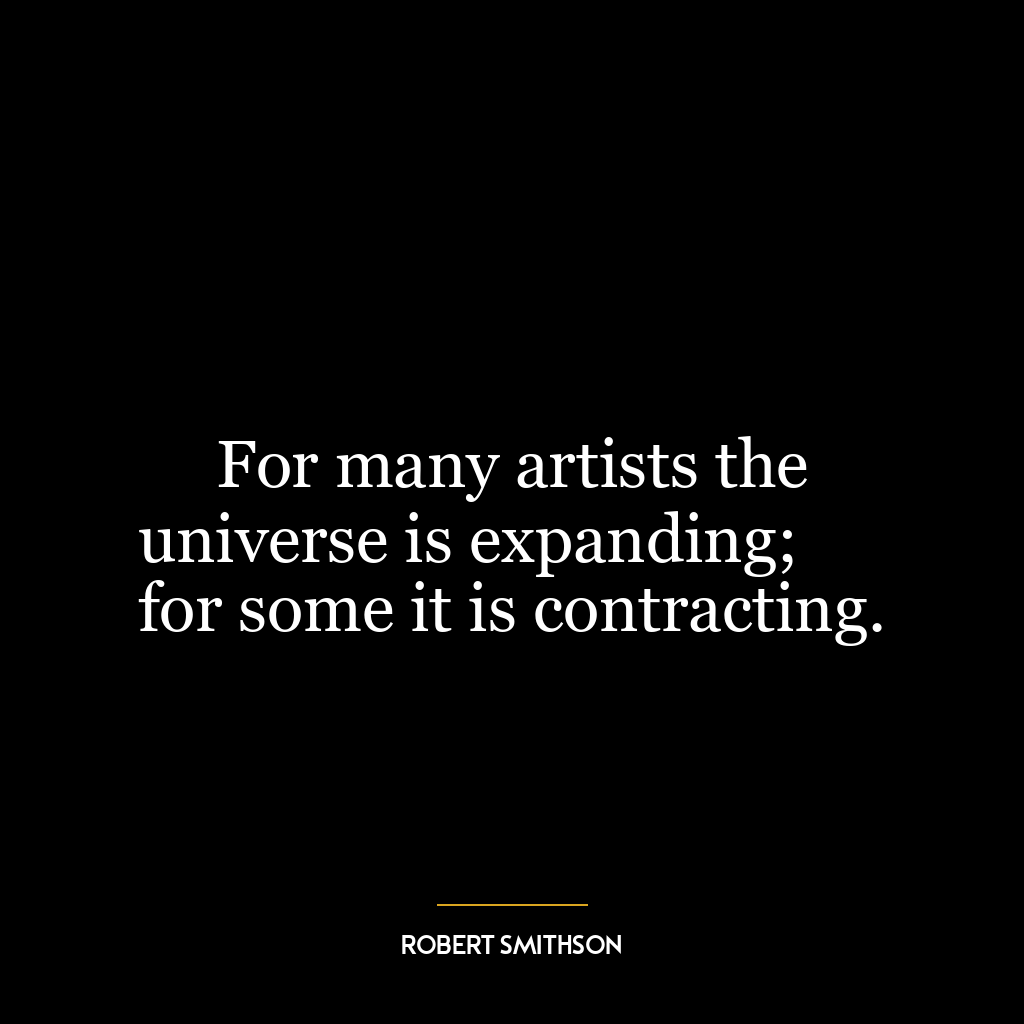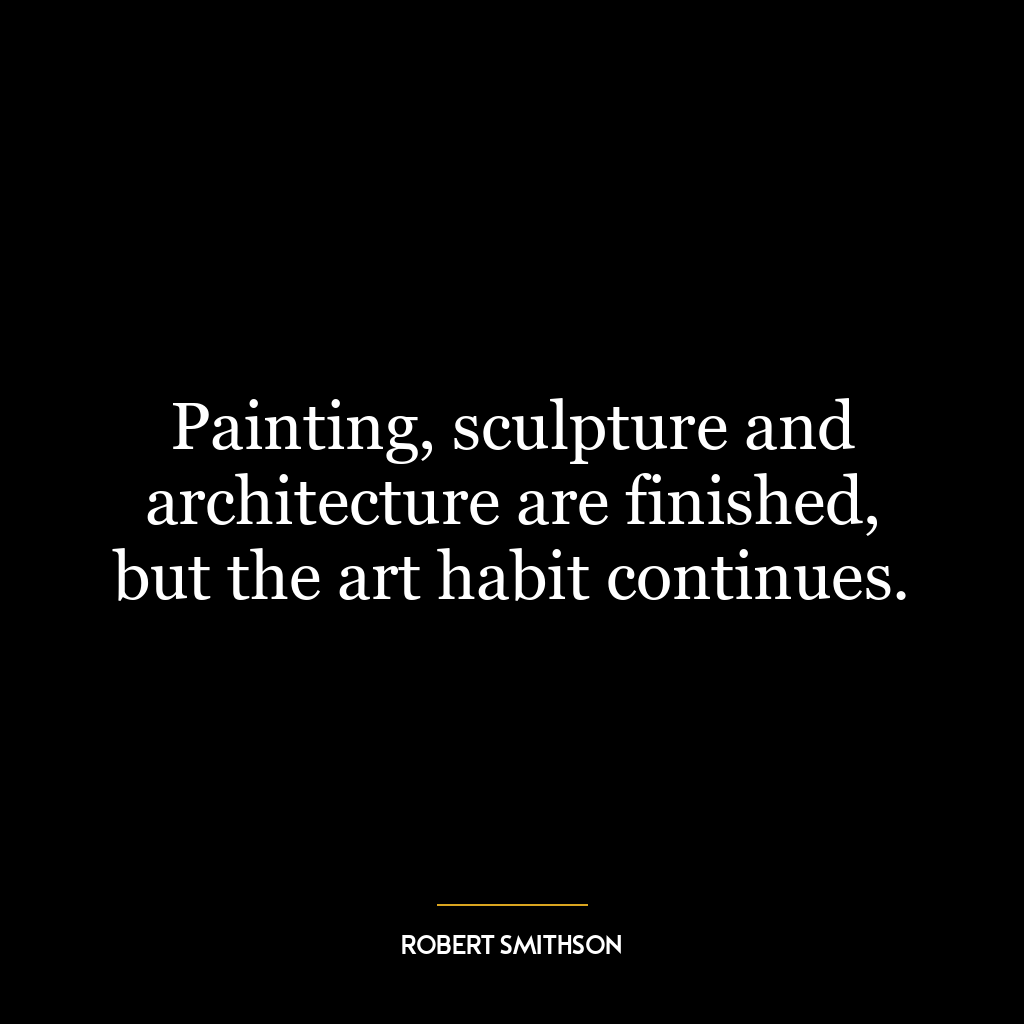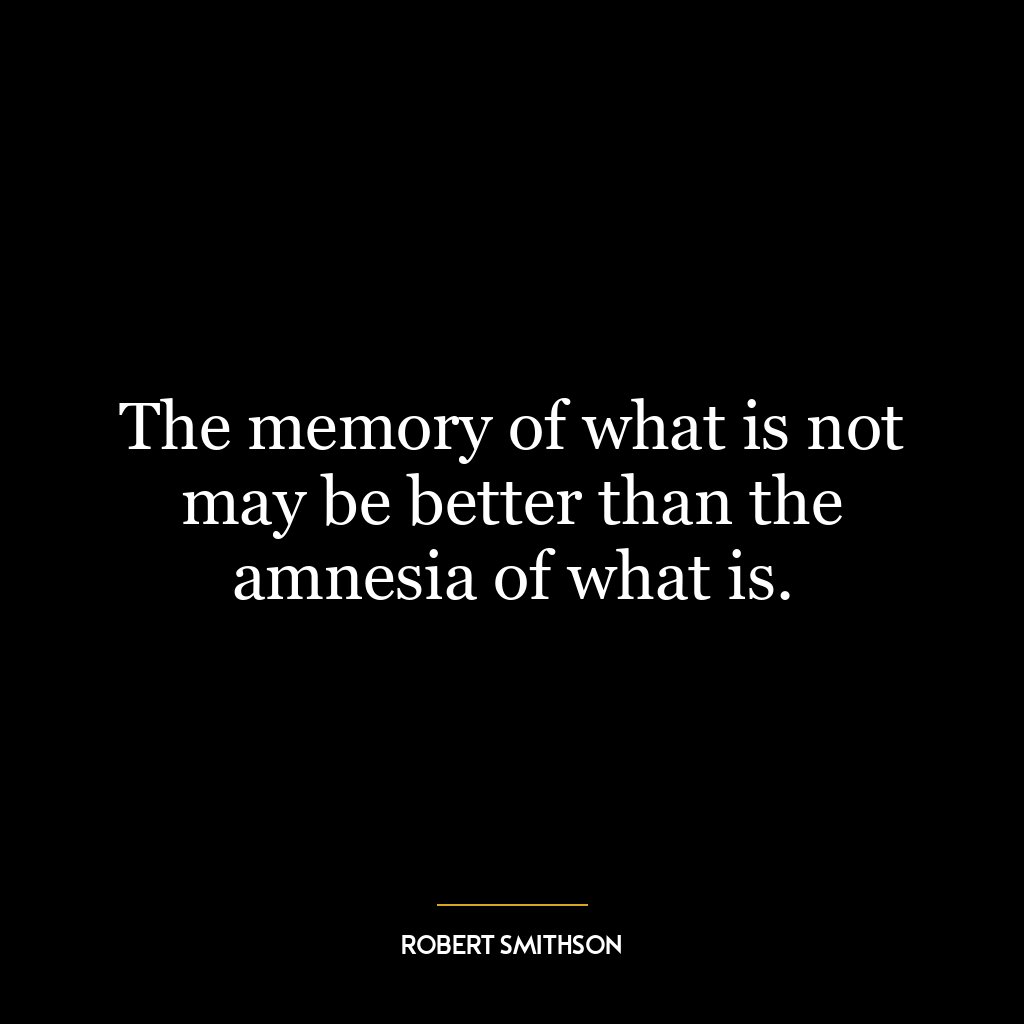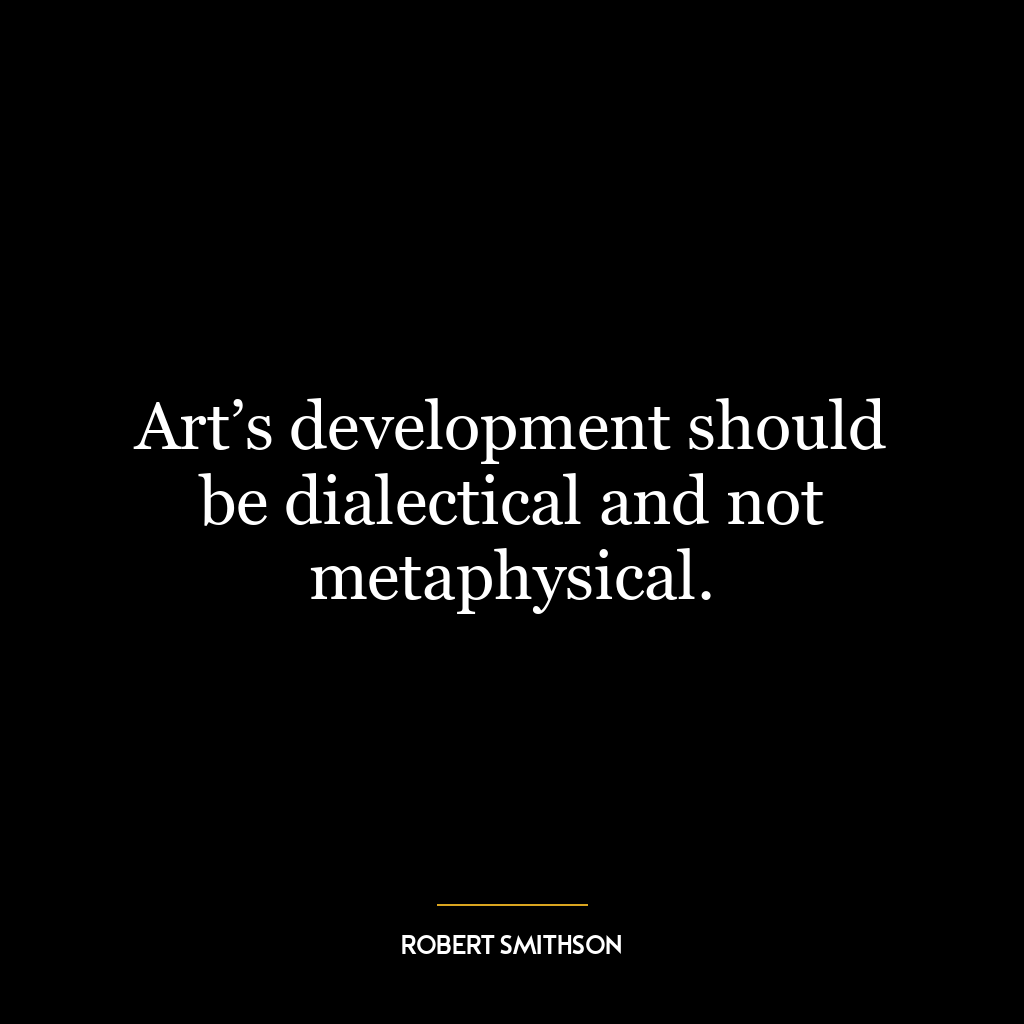Robert Smithson Quotes
- Artist
- USA
- 1938
Robert Smithson (1938-1973) was an American artist known for his pioneering work in the Land Art movement. He was born in Passaic, New Jersey and studied at the Art Students League in New York City. Smithson’s work often explored the relationship between nature and human intervention, and he i…Read More
Robert Smithson (1938-1973) was an American artist known for his pioneering work in the Land Art movement. He was born in Passaic, New Jersey and studied at the Art Students League in New York City. Smithson’s work often explored the relationship between nature and human intervention, and he is best known for his large-scale earthworks and site-specific installations. His most famous work is the Spiral Jetty (1970), a 1,500-foot-long spiral of rocks and earth jutting into the Great Salt Lake in Utah. Other notable works include the Broken Circle/Spiral Hill (1971) in the Netherlands and the Amarillo Ramp (1973) in Texas. Smithson also wrote extensively on art and his ideas about the role of the artist in society. He tragically died in a plane crash at the age of 35, but his legacy continues to influence contemporary artists and the field of Land Art.Read Less
Robert Smithson (1938-1973) was an American artist known for his pioneering work in the Land Art movement. He was born in Passaic, New Jersey and studied at the Art Students League in New York City. Smithson’s work often explored the relationship between nature and human intervention, and he is best known for his large-scale earthworks and site-specific installations. His most famous work is the Spiral Jetty (1970), a 1,500-foot-long spiral of rocks and earth jutting into the Great Salt Lake in Utah. Other notable works include the Broken Circle/Spiral Hill (1971) in the Netherlands and the Amarillo Ramp (1973) in Texas. Smithson also wrote extensively on art and his ideas about the role of the artist in society. He tragically died in a plane crash at the age of 35, but his legacy continues to influence contemporary artists and the field of Land Art.
13 Interesting Robert Smithson Quotes
Robert Smithson Career Highlights
- In the early 1960s, Smithson began his career as a painter, but he soon shifted his focus to sculpture and installations. He gained recognition for his use of unconventional materials such as mirrors, rocks, and earth.
- In 1968, Smithson created his most famous work, “Spiral Jetty,” a 1,500-foot-long spiral-shaped earthwork in the Great Salt Lake, Utah. This piece is considered a masterpiece of Land Art and has become an iconic symbol of the movement.
- Smithson’s interest in geology and the concept of entropy, the idea that all things eventually break down and return to their original state, heavily influenced his work. He explored these themes in his writings and artworks, including his series of “Nonsites,” which were arrangements of rocks and other materials collected from specific locations.
- In addition to his sculptures and installations, Smithson also experimented with photography, film, and writing. He published several essays and articles on art and culture, including his influential essay “The Spiral Jetty,” which discussed the creation and meaning of his famous earthwork.
- Smithson’s career was cut short when he tragically died in a plane crash at the age of 35 while surveying potential sites for his next project. However, his legacy continues to inspire and influence artists to this day.
Key Contributions by Robert Smithson
- Smithson’s most significant contribution to the art world was his role in the development of Land Art, a movement that emerged in the 1960s and focused on creating large-scale, site-specific works in natural landscapes. He, along with other artists, challenged the traditional notion of art as something confined to galleries and museums and instead created works that interacted with the environment.
- Through his works, Smithson also explored the relationship between art and nature, questioning the boundaries between the two. He believed that art should not be separate from the world but rather a part of it, and his works reflected this philosophy.
- Smithson’s writings were also influential in shaping the discourse around Land Art and its significance. He was a prolific writer and used his words to express his ideas and theories about art, culture, and the environment.
What Sets Robert Smithson Apart
- Smithson’s unique approach to art, which combined elements of sculpture, installation, and performance, set him apart from other artists of his time. He challenged the traditional notions of art and pushed the boundaries of what was considered acceptable in the art world.
- His interest in geology and the concept of entropy also set him apart from his contemporaries. He was one of the first artists to incorporate geological elements into his works, and his exploration of the concept of entropy was groundbreaking and thought-provoking.
- Smithson’s untimely death at the peak of his career also sets him apart from other artists. His legacy continues to live on through his works, which have become iconic symbols of the Land Art movement.
Takeaways
- Robert Smithson’s career highlights the importance of pushing boundaries and challenging traditional notions in the art world. His works continue to inspire and influence artists to think outside the box and create thought-provoking pieces.
- His emphasis on the relationship between art and nature serves as a reminder to appreciate and protect the environment.
- Smithson’s legacy also highlights the fragility of life and the impact that one person can have on the world through their art.

